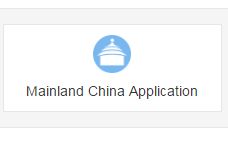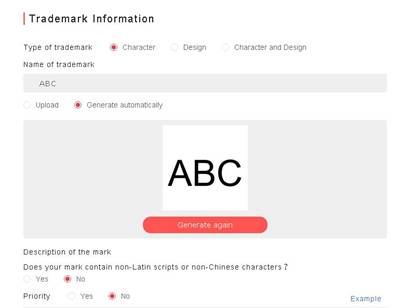
A trademark typically protects brand names and logos used on goods and services, it is different from the copyright, the trademark right does not come when the mark is created, you will obtain exclusive trademark right after get your trademark registered. Trademark registration requirements and process differ depending on each county’s trademark law, so it is important to learn those requirements and process before you get started. This article will give you a general guide on how to get your trademark registered in Mainland China.
What do you need to know before filing?
- If you are a foreign company, or foreign individual, you need to hire an experienced trademark attorney who is licensed to practice law in China, file a trademark application on your own is not accepted.
- The application must be filed in Chinese, and all the official documents, such as filing receipt, notification of refusal, publication and the certificate of registration will be issued in Chinese.
- If your mark is a color mark, and the color is claimed, you need to provide a representation of the mark in the particular color claimed, and a representation of the mark in black and white. Claiming color protection for the mark is usually not suggested though color protection may be desirable for business purposes. If your mark is filed in black and white, it can be used in any color and can be claimed against others’ similar marks in any color. However, if your mark is a little bit weak in distinctiveness, filing the mark claiming color protection is suggested because it may help to improve the degree of distinctiveness. If there is any prior similar mark cited by the CTMO to reject your mark, the specific color claimed may help the argument of different visual effect, and thus enhance the chances of overcoming the rejection. However, the mark has to be used only in that specific color as registered, otherwise it would be considered misuse or invalid use evidence. In addition, though it can be claimed against others’ similar trademarks in same or different color(s), the factor of color(s) will also be evaluated in comparison of the trademarks, so the scope is narrower.
- The China Trademark Office (“CTMO”) requires the applicant’s both Chinese and English name and address, and requires applicants to use consistent names and addresses. Thus, if your name and address have already been recorded with the CTMO, the new application should adopt the recorded name and address, if your name or address changed, you can use the new one, and recording the new one with the CTMO for your previous registrations/applications. If this is your first trademark application in China, and you do not have a Chinese name and address, your attorney will be happy to give you a suggestion.
- You may file trademark application covering multiple classes. However, multi-class applications can be very inflexible in terms of assignments and oppositions. For example, if another party files an opposition action against one class of a multi-class application, then the whole application will be delayed (as opposed to just the challenged class), thus, you can file separate applications for each class, the fees are the same (the official fees and attorney fees both relate to one mark in one class).
- Generally, the CTMO will only accept standard goods and services under the Chinese Classification of Goods and Services, if your list of designated goods and services includes some “non-standard” descriptions, you need to deal with the CTMO’s notification of amendment, which will incur additional cost and delay the application around two months. Moreover, China adopts subclass system, in which one class is divided into several subclasses, and generally, the goods or services which are fall in same subclass are considered similar to each other, goods or services which are fall in different subclass are not considered similar to each other. This means that if your application only covers goods or services in partial subclasses, you would not be able to stop others from registering or using the same or similar marks on the goods or services which fall in rest of subclasses, unless proving that your mark is a “well-known trademark,” an extremely high standard. Thus, adding at least one item from the remaining subclasses to broaden the scope of protection is recommended.
- A trademark clearance search is necessary before you file a trademark application, this search could help you to evaluate the risk in registering your mark and using your mark in China. The How to conduct a Trademark Clearance Search in China takes you understand more about this search.
How to get trademark registration in Mainland China?
Outline of the Trademark Application Procedure

Stage 1: Filing
You can send your filing instruction with filing information to your attorney, the filing information includes trademark, specification, applicant’s name, address, nationality, and priority and color if priority and color is claimed.
The CTMO requires the applicant’s copy of certificate of incorporation if the applicant is a legal entity, or the passport if the applicant is a individual. A copy of Power of Attorney signed by the applicant also is needed, and your attorney will prepare you the suit draft after receiving your filing instruction.
Kangxin Partners, P.C., are always here to help you with a full range of trademark matters, including trademark application for registration, and our Kangxin eService Platform is a very user friendly tool for you to conduct trademark clearance search based on Artificial Intelligence technology, or instruct us on new matters (such as new trademark application, renewal, trademark, registration, etc.) through an online portal and manage your trademark portfolio timely, easily, and clearly. We are continuously adding functionality to the platform as well. Access the platform now at Kangxin eService Platform, https://eservice.kangxin.com.
Below is a brief demonstration on using the Kangxin eService Platform to submit your order of Mainland China trademark application.
Submit an order of Mainland China application for the mark, KANGXIN in Class 45 for example. You will see the process step by step below.
1) Click “Mainland China Application” button, enter the page of Mainland China Application


2) Fill and save the trademark information and Applicant’s information.


3) Confirm your order information, and pay the cost.

4) Upload documents, such as copy of business certificate, ID card, Passport in PDF format.

5) Submit the order.
After receiving your order, our trademark attorney will review and file it with the CTMO if everything is in order.
Stage 2: Formality Examination
After your application is filed, the CTMO will initiate a formality examination, this includes checking of the application form, applicant’s information, the designated goods and services, and attached documents.
If any document is missing, or did not correctly fill the application form, or did not submit the official fee, the CTMO will not accept the application and issue a notification to inform you.
Minor amendments will not affect the filing date of the application i.e. the goods or services are not standard, the Class number of the goods or services is not correct. If there are these kind of deficiencies, the CTMO will issue a notification of amendment to you, and you will have 30 days to remedy the deficiencies.
Major amendments will affect the filing date of the application i.e. the trademark missing, change the representation.
If there are no deficiencies in formality or the deficiencies are remedied, the CTMO will issue you a formal filing receipt with the application number.
Stage 3: Substantial Examination
The substantial examination refers to determine if the trademark satisfies the registration requirements, and the following main grounds of objection could be raised:
1) where the mark is same with the State name, national flag, the mark has negative meaning, the mark is fraudulent and mislead the public in the characteristics such as the quality of goods, etc..
2) Where the mark is inherently not registrable; marks that only bear the generic names, devices, simply indicate the quality, main raw materials, or other features of the goods, and lack distinctive characteristics.
3) Where the mark is identical or similar to prior applications or registrations that recorded to CTMO in respect of identical or similar goods or services.
If the CTMO finds your mark does not satisfy the registration requirements, a notification of refusal will be issued, and you will have an opportunity to appeal the objection to the Trademark Review and Adjudication Board (“TRAB”) within 15 days after receiving the notification.
If the CTMO finds your mark partially satisfy the registration requirements, a notification of partial refusal will be issued, you may file a division application, allowing the approved goods to proceed to publication with a new application number. The rejected goods will maintain the original application number and you may proceed to a TRAB Review of Refusal. If you request a Review of Refusal without filing a division application, then the approved goods will remain unpublished during the review and the further litigation stage.
Stage 4: Publication
If the CTMO finds your mark satisfies the registration requirements, a notification of preliminary approval will be issued and your mark will be published on Trademark Gazettes for opposition.
The opposition publication lasts 3 months, if no opposition is filed, your mark will be formally approved and published for registration and a certificate of registration will be issued.
If an opposition is filed, the CTMO will issue a notification of response to you with all opposition materials, you will have 30 days to respond the opposition, and a further 3 months to supplement additional documents or evidence. Your absence of response will not affect the CTMO’s decision in the opposition.
The opponent does not have an opportunity to rebut your response. After the opposition and response rounds are completed, the Registrar will examine the case and issue a decision. The entire opposition procures takes 12-18 months.
If the opposition decision is in your favor, your mark will be approved for registration and a certificate of registration will be issued. The opponent does not have an opportunity to appeal the decision. However, if the opposition decision is not in your favor, you will have an opportunity to appeal the decision with Trademark Review and Adjudication Board (“TRAB”) within 15 days after receiving the decision.
Stage 5: Registration
Once your trademark has been approved for registration, the CTMO will issue a certificate of registration, and the notice of registration will be published in the Trademark Gazette.
What can we do for you?
Selecting a mark, determine the scope of protection, fill the application form and submit the documents to CTMO, and respond the office action, etc. all of these are very important and can be very complicated. Thus, hire an experienced and responsible attorney could yield twice the result with half the effort. We as trademark attorneys provide full range of services in respect to trademark registration in Mainland China, i.e. we can help you to select a proper mark which could increase the chance of successfully obtain registration, advise the scope of protection which could mostly protect your trademark right in Mainland China, submit the application correctly and timely, effectively communicate the status of the application with the registrar and providing detailed and comprehensive legal advice on possible office notifications and actions.


Follow us






